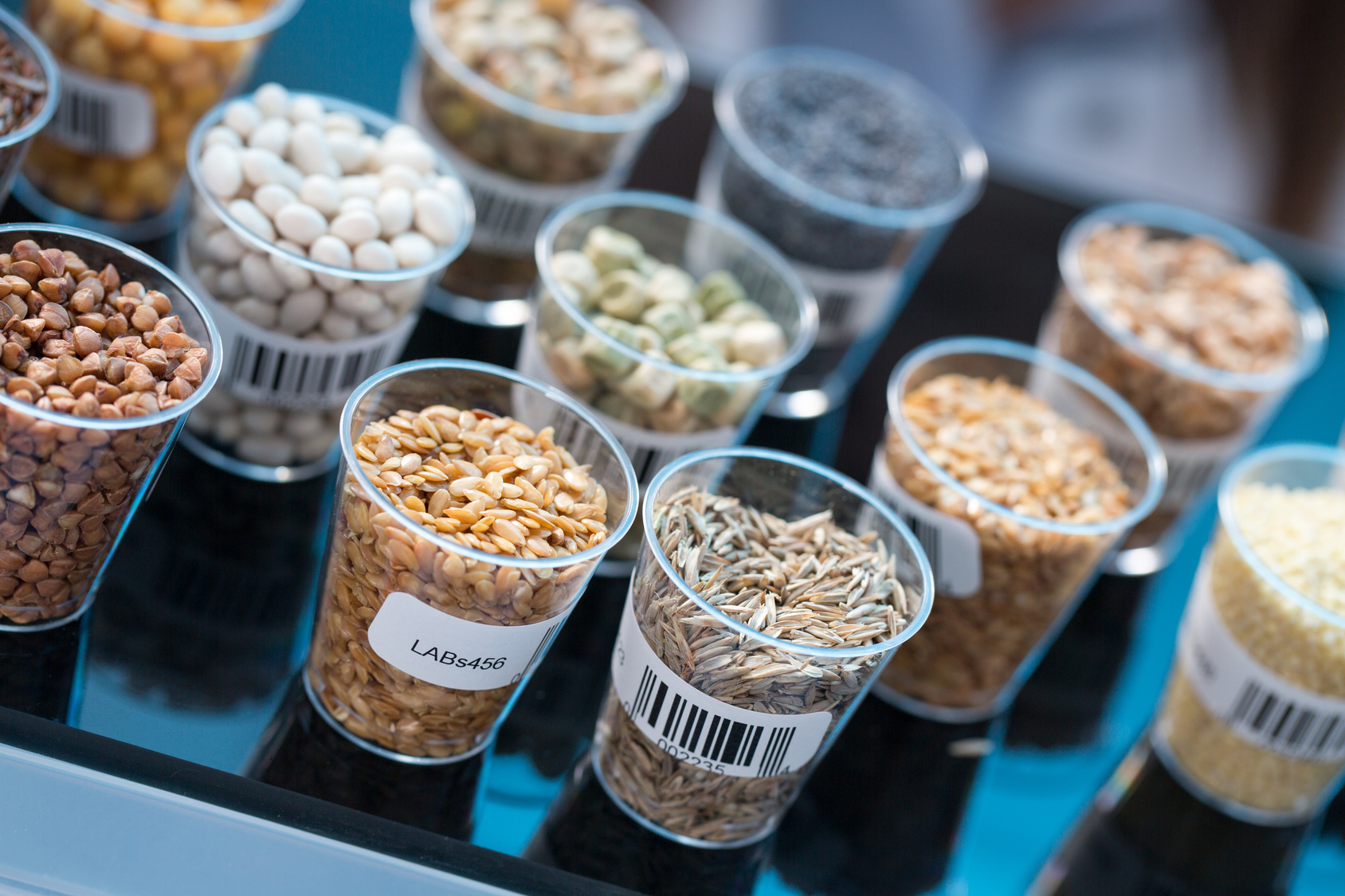
By Essenese Obhan
There have been dramatic advancements in agriculture in the last century. A tremendous increase in agricultural productivity took place due to advances in plant breeding, development of fertilizers, herbicides and pesticides, multiple cropping methods, and introduction of genetically modified crops. Advances in plant breeding led to the development of plant varieties with superior traits such as resistance to drought, stress or diseases, large seeds, higher yield. Biotechnology has helped complement traditional tools for the improvement of plants. For example, biomarkers or genetic markers allow more efficient plant selection. Genetic engineering helps introduce new genes with desirable traits, such as insect resistance, into the breeding pool, thereby leading to the development of new varieties with superior characteristics.
Alongside these changes, the nature of proprietary technologies and the intellectual property rights (IPR) sought has also changed. Patents filed in the agricultural space cover technologies ranging from the chemical composition of fertilizers, pesticides, herbicides, and equipment, to gene sequences and methods of genetic transformation of plants.
A recent controversy that has emerged is in the IPR surrounding genetically modified (GM) seeds. While the Patents Act 1970 (Patents Act) prohibits any patents on plants, plant varieties or seeds, it does not specifically exclude man-made gene sequences that are present in GM seeds. As a result, biotech companies that may have patent rights on man-made gene sequences use patent law to claim indirect patent rights on the seed itself.
This paper discusses the legal framework in India for the IP protection of such gene sequences and whether the appropriate protection lies under the Patents Act or elsewhere.
Patent Position
The Patents Act offers patent protection for inventions. An invention is defined as a new product or process involving an inventive step and capable of industrial application. Section 3 of the Patents Act lists what are not inventions in India. Thus, in order to be eligible for a patent in India, not only must the claimed invention meet the criteria for eligibility, it must also not fall under the exclusion listed under Section 3. At least four provisions are relevant for the purposes of agriculture and GM seeds.
Section 3(c) excludes the ‘discovery’ of any living thing or non-living substance (i.e., products of nature) from patentable subject matter. The distinction between discovery and invention is particularly important in the case of biotechnological inventions. A biotechnology product, such as a nucleic acid sequence, a polypeptide, an enzyme, a plasmid or a microorganism, is considered patentable only when there is substantial human intervention or human ingenuity in the invention. Therefore, an isolated naturallyoccurring gene or nucleic acid sequence is not patentable, but a genetically modified gene or nucleic acid sequence is patentable, if it fulfils other requirements of patentability.
Under Section 3(d), a new form of known substance which does not result in enhancement of known efficacy or mere discovery of any new property or new use for a known substance is also not patentable. In a case involving Monsanto (2013),1 a method of producing heat, salt and drought tolerant transgenic plants using cold shock protein was claimed, but was rejected by the Intellectual Property Appellate Board (IPAB) under Section 3(d) as the cold tolerant property of cold shock protein was already known in the art.
Section 3(h) specifically excludes agricultural and horticultural methods from patentable subject matter. In 9827/DELNP/2007, a method of reducing mycotoxin contamination of a plant and/or harvested plant material that involved treatment of seeds with the chemicals before sowing or during sowing in the field for the plant cultivation process was considered non-patentable under this provision.
Section 3 (j) is clearly the most relevant section as far as GM seeds are concerned. Plants in whole or any part thereof, seeds, plant varieties and essentially biological processes for production and propagation of plants are categorically excluded from patentability. Section 3(j) was introduced when the Patents Act was amended in 2002 to meet India’s obligations under Article 27 of the Agreement on Trade-Related Intellectual Property Rights (TRIPS). While the Indian provision is similar to Article 27, it makes some significant modifications. For example, Article 27 refers to ‘plants or animals’, but Section 3(j) further limits it to ‘plants and animals in whole or any part thereof’. While Article 27 is silent about ‘seeds’, Section 3(j) specifically mentions ‘seeds’ as excluded. To appreciate the reasons for these modifications and to better understand the correct scope of Section 3(j), it is useful to review the history of the provision.
Article 27.3(b) of TRIPS allows members to exclude from patentability plants, animals, varieties and “essentially” biological processes, but mandates that micro-organisms, nonbiological and microbiological processes have to be eligible for patents. Article 27.3(b) also states that plant varieties have to be eligible for protection either through patent protection or a system created specifically for the purpose (“sui generis”), or a combination of the two. Article 27.3(b) was scheduled for a statutory review by signatory countries in 1999. India’s submissions,2 made on 20 October 1999, included its views on patenting of life forms. Section 3(j) was introduced in the Patents Act by the 2002 amendment after India had submitted its views on Article 27(3). Relevant paragraphs of the submissions in this regard are reproduced below.
“II. PATENTING OF LIFEFORMS
6. Patenting of lifeforms may have at least two dimensions. Firstly, there is the ethical question of the extent of private ownership that could be extended to lifeforms. The second dimensions relates to the use of the IPRs concept as understood in the 2 IP-C-W-161 Industrialized world and its appropriateness in the face of the larger dimension of rights on knowledge, their ownership, use, transfer and dissemination. International IPR regimes recognize formal systems of knowledge only. Informal systems e.g. the shrutis and smritis in the Indian tradition and grandmothers’ potions all over the world get scant recognition. To create systems that fail to address this issue can have severe adverse consequences on mankind, some say even leading to our extinction.
7. Clearly, there is a case for re-examining the need to grant patents on lifeforms anywhere in the world. Until such systems are in place, it may be advisable to: – (a) exclude patents on all lifeforms; If this is not possible, then: (b) exclude patents based on traditional/indigenous knowledge and essentially derived products and processes from such knowledge; or at least: (c) Insist on disclosure of the country of origin of the biological resource and associated knowledge, and obtain consent of the country providing the resource and knowledge, to ensure equitable sharing of benefits.
III. MICRO-ORGANISMS
The third dimension is the coverage of micro-organisms under the Article. The Article requires patenting of micro-organisms, non-biological and micro-biological processes. This would mean that perhaps the micro-organism which is the manmade, geneticallyengineered bacterium, would meet the test of patentability. Another question is the patentability of biological material such as cell lines, enzymes, plasmids, cosmids and genes. It appears that this will not qualify as inventions unless there is human intervention involved and unless they fall in the category of microorganisms. In cases where the biological material is also a chemical, as in the case of artificial enzymes, they could be patentable as chemicals.
Its submissions suggest that India intended to offer patent protection to man-made gene sequences as ‘chemicals’ and not as life forms, such as in plants or seeds.
Even the Mashelkar Committee, a committee constituted by the Government of India to review the proposed amendments to the Patents Act, in its Report stated that artificial genes and gene products such as proteins and enzymes are treated similar to chemical compositions. (See Point 5.42, Page 13 of Mashelkar Committee Report).
The introduction of the words ‘seeds’ and ‘varieties’ in Section 3(j) are also significant as they exclude from patentability all types of seeds and varieties without any qualification. Thus, both naturally-occurring and genetically modified seeds and varieties are excluded from patent protection in India.
The words “any part thereof” in Section 3(j) would logically include all parts of plants and animals such as genes, enzymes, proteins, cells, cell lines, tissues, organs, which in turn would not be patentable. Thus, naturally-occurring genes or nucleic acid sequences and proteins are not patentable. However, synthetic or artificial nucleic acid sequences and proteins may be patented if they satisfy other criteria of patentability. Such nucleic acid sequences or proteins are treated as chemical compositions.
India’s submissions on the review of Article 27.3(b) makes reference to “microorganisms” and “biological process”. Microorganisms, while patentable subject matter, have not been defined in the Patents Act. Micro-organisms are commonly defined as any microscopic organism, including bacteria, viruses, unicellular algae and protozoans, and microscopic fungi. They are considered to be a category of life different from the kingdoms of plants and animals. Cells and tissues from higher plants and animals, although microscopic in size, are not micro-organisms.
A “biological process” is any biological activity carried out by any living organism, be it at the molecular, cellular or organism level. The Patents Act and the Biotechnology Guidelines (“the Guidelines”) issued by the IPO in 2013 do not define “essentially biological processes,” but allow for some inference to be drawn about what this term entails. According to an example in the Guidelines, a claimed method involving the step of cross-breeding for producing pure hybrid seeds, plants and crops, would be an essentially biological process, and thus not allowable under Section 3(j). In a case involving Monsanto (2013), the patent application under consideration claimed “a method of producing a transgenic plant steps of “inserting into the genome of plant cells a specific recombinant DNA molecule and obtaining transformed plant cell containing said recombinant DNA”. The IPO originally objected to the claim under Section 3(j) stating that the method was an essentially biological process. Although the patent application was rejected on other grounds, the IPAB overturned the IPO’s objection regarding the “essentially biological process,” holding that the claimed process included an act of “human intervention” on a plant cell and producing in that plant cell some change in the manner claimed in the application and, therefore, not an essentially biological process.3
The decision of the Enlarged Board of Appeal in T 1242/06 which on page 71, point 3 reads as follows: “If however, such a process contains within the steps of sexually crossing and selecting an additional step of a technical nature, which step by itself introduces a trait into the genome or modifies a trait in the genome of the plant produced, so that the introduction or modification of that trait is not the result of mixing of the genes of the plants chosen for sexual crossing, then the process is not excluded from patentability under article 53(b) EPC.” Directive 98/44/EC of the European Parliament and of the Council of 6th July 1998 on the legal protection of Biotechnological inventions, Article 2 (2): “A process for the production of plants or animals is essentially biological if it consists entirely of natural phenomena such as crossing or selection.”
The inter-ministerial correspondence about the 2002 amendment to the Patents Act and in particular Section 3(j) are also revelatory. The Department of Industrial Policy and Promotion (DIPP), responsible for the 2002 amendments, circulated a background note on 01 April 1999 to various Ministries/Departments for their comments. On exclusions under Section 3, different ministries responded as follows:
Submissions made by Ministry of Agriculture
“In the category of product patent as suggested in section of the proposed amendments in the Patents Act, 1970, the genetically modified organisms (GMOs) which are produced by engineering the genetic makeup of naturally occurring organisms by human intervention through biotechnological or microbiological processes should be eligible for patents. It is however clarified GMOs per se only will be patentable. Seeds/planting material or any other parts of the plant or plant material containing GMOs would not be patentable. GMOs if incorporated in a plant variety, would however be regulated under the proposed Plant Varieties and Farmers Rights legislation of the Department of Agriculture and Cooperation.”
Submissions made by Ministry of Commerce
“Section 3(j) – Plants and animals in whole or any parts including DNA, cells, seeds, varieties and species etc from the category of inventions (exclusion of plant variety is in order as they are being addressed separately by the Ministry of Agriculture).
Article 27(3)(b) allows members to exclude plants and animals from patenting. It does not however, exclude microorganisms and non-biological and microbiological processes. Hence, our law has to provide for patenting of microorganisms and non-biological and microbiological processes. Further, protection for plant varieties has to be provided either by patents or by an effective sui generis system or any combination thereof. In this
last case, there is no need for a provision in the Patents Act as Ministry of Agriculture is separately addressing plant varieties through a sui generis system.”
Interestingly, after the introduction of Section 3(j) by the 2002 amendment, various newspapers published articles on the impact of these amendments. One of these articles was ‘The Monsanto Amendment’ by Vandana Shiva, published in Economic Times on 27 May 2002, in which the author raised concerns about the future of Indian agriculture, and particularly about the amendment permitted patenting of genetically modified seeds. Shiva suggested that the amendments had “opened the flood gates of patenting of genetically engineered seed”, to which the DIPP claimed that the exclusion under Section 3(j) would also apply to genetically engineered seed. Similarly, to Shiva’s allegations that the amended law would now allow Monsanto to patent Bt cotton, DIPP said that “Section 3(j) specifically excludes the patenting of plants” and “[t]herefore no patent on Bt cotton [could] be allowed”. According to DIPP’s interpretation of the amended law, no patents could be granted for transgenic plants either, as well as for parts of plants (such as seeds). Clearly, the legislative intent of the amendment to Patents Act, as demonstrated by DIPP’s comments, in its capacity as the nodal agency responsible for drafting the amendments to the law, was to treat GM seeds, as not patentable. That said, none of these provisions have ever been tested in a court of law, until now. Through its challenges in various courts in India, Monsanto is testing these legislative interpretations by the DIPP. It remains to be seen how Indian courts choose to define the contours of patentability in the light of Monsanto’s challenges.
PPVFRA
Besides the Patents Act, the creation of a new plant variety by any breeder, whether a seed or a biotech research company or an individual farmer, is protected in India under the Protection of Plant Variety and Farmers Right Act, 2001 (“the PPVFR Act”). A transgenic plant variety is a plant variety that has one or more genes from a foreign organism, such as bacteria, incorporated in it by a biotechnology process in a lab. These genes confer certain additional ‘traits’ to the plant variety. Once a transgenic plant variety
is developed and approved for release in to the environment, other transgenic plant varieties can be created from it by transferring the relevant genes to other plants by natural biological processes, such as selecting and crossing of plants.
The PPVFR Act defines variety as including its propagating material, i.e. the seed, and includes within its ambit transgenic varieties. Thus, the provisions of two laws – the PPVFR Act and the Patents Act – offer clear distinctions between what can be protected as a patent or a plant variety. Plant varieties and seeds, including transgenic varieties and GM seeds that were excluded from the Patents Act stand protected under the PPVFR Act.
The PPVFR Act also provides for “researchers’ rights” that permit any person to use a plant variety as an initial source for creating other varieties without requiring any authorization. This is particularly relevant for breeders who typically use transgenic varieties as an initial variety to create new transgenic varieties by natural biological processes. In return, the creator of the transgenic variety is eligible to claim a share in the benefit accruing to the breeder (Section 26 read with Rule 43). The benefit sharing amount must be determined by the Plant Variety Protection Authority (“the Authority”), and must be fair and reasonable. It must also address the interests of all the parties i.e., breeders, the trait provider and farmers. Further, the amount must not be high or arbitrarily fixed. For example, in the case of Bt cotton, Monsanto ought to have sought benefit sharing rights for its Bt cotton variety by applying to the Authority. In turn, the Authority would determine the amount that Monsanto could claim from the Indian seed companies.
Two factors are relevant while determining the amount for benefit sharing: firstly, the extent and nature of the use of genetic material of the claimant of benefit sharing in the development of the variety relating to which the benefit sharing has been claimed; and secondly, the commercial utility and demand in the market of the variety relating to which the benefit sharing has been claimed.
The amount for benefit sharing as determined must be deposited by the breeder of the variety in the National Gene Fund (“NGF”) and is recoverable by the District Magistrate within whose local limits the breeder resides. The fund is utilized for various things, such as the compensation payable to the farmers, the expenditure for supporting the conservation and sustainable use of genetic resources, and so on. Thus, a key contributor to the NGF is the benefit sharing amount received from the breeder of a variety.
Conclusion:
India appears to have a well-balanced legal framework that protects the rights of plant breeders, farmers and biotech companies. The Patents Act permits biotech companies to patent their artificially engineered genes and use them to create transgenic seeds in a laboratory. Biotech companies have the corresponding right to prevent anyone else from producing such transgenic seeds in a laboratory and selling the same. In fact, in the case of Bt cotton, Monsanto did precisely this, when it sold transgenic seeds to Indian seed companies for use as initial varieties for creating new varieties. However, once the transgenic seed is sold by a biotech research company, it cannot claim patent rights on subsequent seeds produced by farmers and breeders using essentially biological processes. For that, arguably, it must rely on the provisions of benefit sharing under the PPVFR Act.
















